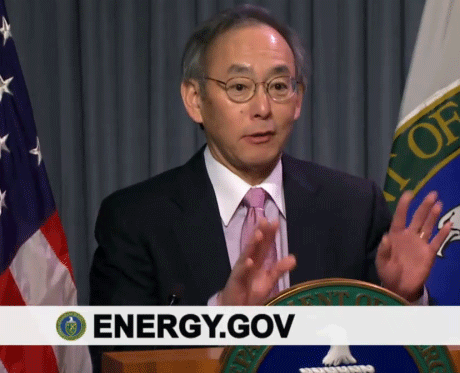Rhone Resch listened carefully Friday as Secretary of Energy Steven Chu announced “SunShot,” a new federal initiative with the ambitious goal of reducing the total cost of photovoltaic (PV) solar power systems by 75 percent by the end of the decade.
Resch liked what he heard.
As president and CEO of the nation’s largest solar trade organization, the Solar Energy Industries Association (SEIA), Resch calls the initiative “significant because DOE is focusing on driving down the cost of the other components of a solar system” — not just the cost of PV cells. In a statement following Chu’s announcement, Resch said that the cost of PV panels has been cut in half in the last two years, so focusing on other aspects is the right approach.
The $27 million SunShot initiative focuses on four areas:
- Increasing the efficiency of the solar manufacturing process
- Optimizing the performance of the installation
- Improving solar PV technologies
- Streamlining the permitting process
Not to minimize the importance of the first three areas on the list, but it is the fourth item — reducing solar “soft costs” — that is bound to please the solar industry.
Read the complete article at my Forbes blog, Edison 2.0
Filed under: All,Renewables,Solar
Trackback Uri









